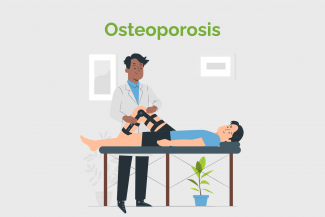Every year, osteoporosis causes about 8.9 million fractures. According to the International Osteoporosis Foundation (www.iofbonehealth.org/facts-statistics), by the year 2050 50% of all osteoporotic hip fractures will occur in Asia. This is partly due to inadequate diagnosis and treatment, even in the most high-risk patients who have already had a fracture.

What tests do I need to have done
The doctor may recommend some of the following :
DEXA Scan (Dual Energy X-Ray Absorptiometry): This is a type of bone densitometry test commonly used for osteoporosis, which measures bone mineral density. It usually focuses on the spine and the hip or on total bone density to gauge fracture risk.
Know more on Dexa Scan or Bone Scan
Blood test markers: Blood or urine tests check the chemical processes occurring within the bone. These tests reveal several markers -enzymes, proteins and other substances circulating in the body - that provide clues to your condition.
Related: What does my blood report mean?
Changed
28/Apr/2025
Condition









